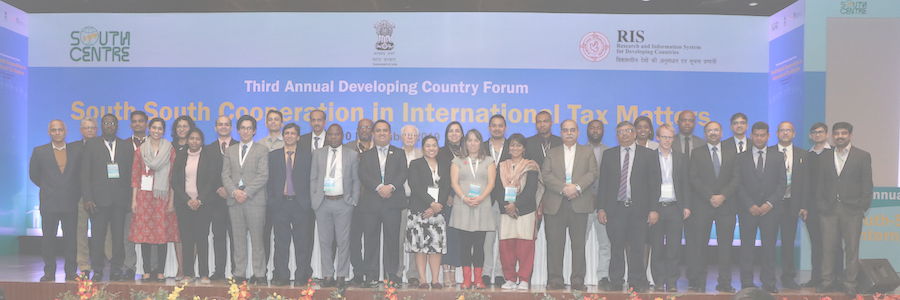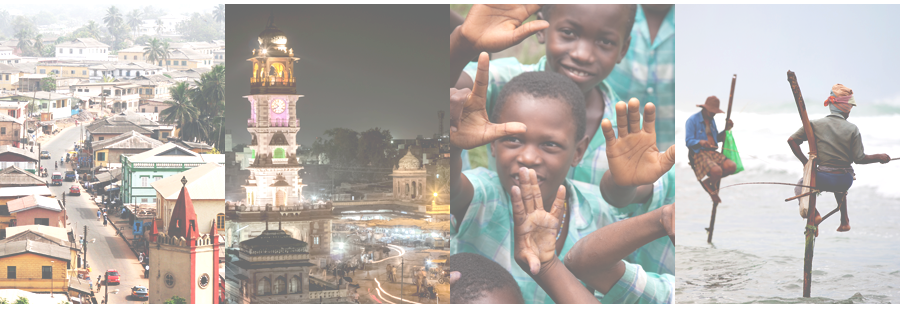Climate change: Battle of interpreting Paris Agreement takes place at COP22 in Marrakech
A year after the historic Paris Agreement was adopted, the UN Climate Change Convention held its 22nd Conference of Parties in Marrakech in November 2016. The Paris Agreement has come into force, in record time, but as the COP22 showed, there are big differences on what Parties understand the Agreement to mean. The article below explains this battle of interpretation and other highlights of the Marrakech meeting.
By Meena Raman
A battle of interpretation over what was agreed to in the Paris Agreement took place at the annual UN Climate Conference in Marrakech in November 2016.
This battle, mainly between developing and developed countries, was the major theme at the 22nd session of the Conference of Parties (COP22) of the UN Framework Convention on Climate Change on 7-19 November.
Presided over by the Foreign Minister of Morrocco, Salaheddine Mezouar, the conference comprised the COP 22 as well as meetings of the Convention’s subsidiary bodies.
A historic event was the convening of the first session of the Conference of the Parties serving as the meeting of the Parties to the Paris Agreement (CMA 1) on 15 November. It is the supreme body of the Paris Agreement (PA), which entered into force in record time on 4 November.
Much of the important work was done under a body created when the Paris Agreement was adopted, known as the Ad Hoc Working Group on the Paris Agreement (APA). The APA was tasked to craft various rules related to the implementation of the PA, commonly known as “modalities, procedures and guidelines” (MPGs).
Other Subsidiary Bodies of the Convention and other thematic bodies are also assigned tasks to implement the PA.
In Marrakech, in various meetings under the APA, there were stark divergences of views between developed and developing countries on how Parties understand and interpret the PA, though everyone agreed the PA should not be renegotiated as it was “delicately balanced.”
Disagreements on interpreting Nationally Determined Contributions
The disagreement was most obvious in the APA informal consultations on what guidance to give on nationally determined contributions (NDCs), as to their features, their scope and information.
The NDCs are the heart of the PA, which all Parties have committed to undertake as their ‘contributions’ to the global response to climate change. The scope of the NDCs was a big fight in Paris, which led to Article 3 of the Agreement.
Article 3 states that, “As nationally determined contributions to the global response to climate change, all Parties are to undertake and communicate ambitious efforts as defined in Articles 4, 7, 9, 10, 11 and 13 with the view to achieving the purpose of this Agreement as set out in Article 2. The efforts of all Parties will represent a progression over time, while recognizing the need to support developing country Parties for the effective implementation of this Agreement.”
Article 3 symbolizes the ‘battle’ over the nature of the agreement to ensure that the NDCs are not viewed as being ‘mitigation-centric’ or only focused on mitigation actions. Thus Article 3 refers to ambitious efforts to be taken on mitigation (Article 4), adaptation (Article 7), finance (Article 9), technology development and transfer’ (Article 10), capacity building (Article 11) and a ‘transparency framework for action and support’ (Article 13).
In defining the features and information related to NDCs, the battle in Marrakech was once again on the scope of the NDCs. Developed countries and some developing countries were of the view that the focus of work on the ‘further guidance’ should be confined only to ‘mitigation’ and not include the full scope of the NDCs as referred to in Article 3.
Several developing countries led by the Like-minded developing countries (LMDC) (who were the main architects of Article 3), the African Group and the Arab Group strongly emphasised that NDCs do not only include mitigation and therefore discussions must include the whole range of issues in the NDCs. The LMDC was of the view that any technical work could not be advanced if this was not the understanding. They wanted a comprehensive understanding of what are NDCs so that all the components of NDCs are addressed in a balanced manner.
Developed countries could not agree to this, which led to the co-facilitators of the APA informal consultation on this matter to conclude that “there was agreement that Parties must respect the PA and the ‘national determination’ character of the contribution” but that “Parties had divergent views on the features of NDCs.”
Hence, in the negotiations in 2017, the features of the NDCs will continue to be a major contentious matter.
The issue of differentiation between developed and developing countries and how it should be operationalized in the PA also affected other issues, including the transparency framework on action and support, facilitating implementation and compliance, the global stocktake and adaptation communications.
In the various meetings, a common conflict was over the application and operationalization of the principle of common but differentiated responsibilities and respective capabilities (CBDRRC), in the light of national circumstances, in the various articles of the PA.
Many developing countries stressed the need to integrate the CBDRRC principle in the design of the various MPGs. Developed countries disagreed and wanted a common approach to be taken by all countries and not a “differentiated” approach insisted upon by the developing countries.
Another area of contention was around the issue of the Adaptation Fund (AF) and its future under the PA. Developing countries were of the view that the decision taken in Paris was for the AF to serve the PA and that the Marrakech meeting should work to give effect to the decision.
Developed countries on the other hand did not agree that such a decision was taken and insisted that work was needed to clarify that the AF serves the PA. In the final decision adopted, the CMA decided that “the AF should serve the PA, following and consistent with decisions to be taken…” in 2018 “that address the governance and institutional arrangements, safeguards and operating modalities of the AF.”
CMA1: Work programme on Paris Agreement implementation
COP 21 assigned various tasks to the subsidiary bodies of the Convention and other constituted bodies in relation to the implementation of the PA.
An issue in Marrakech was the convening of the CMA and how all Parties, including those who have yet to ratify the PA, can take part in decision-making on its implementation. Parties were in general agreement that the process has to be inclusive that enables all Parties of the Convention to craft the rules, and not only Parties that had so far ratified their membership to PA.
As expected the CMA 1 took a decision to invite the COP (which includes all Parties to the UNFCCC) “to continue to oversee the implementation of the work programme under the PA”.
This decision allows the various bodies to continue and complete the work assigned to them in an inclusive manner under the COP and that further decisions will only be adopted at the CMA session in 2018. The next COP and CMA meetings will be in Bonn on 6 -17 November 2017.
The issues under the APA
Under the APA, informal consultations were facilitated by two co-facilitators on six items: (i) guidance on features, information and accounting of NDCs; (ii) guidance related to the adaptation communication; (iii) modalities, procedures and guidelines (MPGs) for the transparency framework for action and support; (iv) matters relating to the global stocktake; (v) modalities and procedures for the effective operation of the committee to facilitate implementation and promote compliance and (vi) further matters related to the implementation of the PA.
Among the most contentious items were those of the NDCs (which is reported above) and the MPGs for the transparency framework.
On the transparency framework, Parties had agreed in Article 13(1) of the PA for “an enhanced transparency framework for action and support, with built-in flexibility which takes into account Parties’ different capacities …”
(The transparency framework relates to the measurement, reporting and verification of information provided by Parties, both as regards their climate actions as well as that of support which relates to the provision by developed countries of finance and receipt of these resources by developing countries).
The issues discussed were both political and technical, with the ‘political’ relating to how differentiation between developed and developing countries is operationalized in the MPGs.
On the overall structure of the framework, the developed countries proposed that the MPGs should be common to all Parties with built-in flexibility, while the developing countries especially from the LMDC see the MPGs themselves to be differentiated.
The United States expressed the view that the transparency framework was not divided into ‘developed’ and ‘developing’ countries but focuses on the capacity of countries to carry out the specific transparency MPGs.
The LMDC position was that the PA establishes an ‘enhanced’ transparency framework rather than a ‘common’ or ‘unified’ framework; that it shall be based on differentiated obligations and recognises the different capabilities and capacities of developed and developing countries; that there should be differentiation in the operationalization of the framework and that flexibility has to be accorded to all developing countries.
India in its submission stated that the existing arrangements under the Convention have shown that a common but differentiated transparency framework on action and support can be developed and implemented effectively, while preserving and reflecting equity and the principle of common but differentiated responsibility (CBDR). The Arab Group had similar positions as that of the LMDC.
Developed countries on the other hand stressed the importance of having a common transparency framework, with flexibilities for developing countries that do not have capacity. The EU identified the common MPGs in the areas of reporting guidelines; guidelines for technical expert review and for the facilitative and multilateral consideration of progress.
On the issue of ‘flexibility’, while all Parties agreed on the importance of providing flexibility to developing countries that need it, there were different ideas on how such flexibility could be defined and applied to the MPGs.
For the LMDC, the flexibility to be applied is for all developing countries as they have insufficient capacities in areas of statistics, institutional arrangements, necessary resources etc.
The Arab Group, China, and India further stressed that it is most important to ensure the continuance of the provision of flexibility to developing countries, through ensuring the continuity of differentiation while developing the MPGs. The flexibilities should also be provided to developing countries in a systemic nature, meaning that it is integrated into the entire transparency regime and reflected in terms of scope of reporting, frequency and level and detail of reporting.
The issue of differentiation and its operationalization will continue to be a major political battle in 2017.
The agreed conclusions of the APA noted that while there was progress on all the substantive agenda items, much remains to be done and there was need to progress on all items in a coherent and balanced manner, and to ensure a coordinated approach with regard to related matters considered under the Subsidiary Bodies.
The progress of work on the agenda items were reflected in informal notes prepared by the co-facilitators and it was agreed that the notes will be helpful for the future work of the APA.
Concerns over shifting of focus to actions post-2020 instead of pre-2020
Another area of tussle between developed and developing countries was on climate actions to be taken pre-2020 and post-2020.
Developed countries wanted the focus of climate actions to be mainly on post-2020 contributions by all countries under the PA, while developing countries emphasised the importance of the developed countries implementing their existing commitments under various decisions of the UNFCCC and the Kyoto Protocol in the pre-2020 time-frame.
The developing countries’ position is understandable. As Parties celebrated the early entry into force of the PA, the Doha Amendment to the Kyoto Protocol (KP) that is supposed to give effect to the second commitment period of the KP (2CP) for emissions reductions by developed countries for the period 2013-2020 has yet to come into effect.
Parties had agreed in 2012 in Doha, Qatar, to amend the KP to incorporate the 2CP where developed countries who are Parties to the KP will undertake aggregate emission cuts that would be at least 18 per cent below 1990 levels. They also agreed that developed countries will revisit their emission reduction commitments by the end of 2014, with a view to increasing their ambition level.
Regrettably, neither has the 2CP come into effect, nor has there been a revision of the ambition level for the emission cuts of developed countries thus far.
As noted by India’s chief negotiator, Ravi Prasad, during the ‘Facilitative Dialogue on Enhancing Ambition and Support’, many developed country delegates were focusing on actions in the post 2020 time-frame. Countering this approach, he stressed that ambition could not be put off for another four years.
Thailand, representing the G77 and China, said at the closing plenary in Marrakech that “After 4 years, only 73 Parties have deposited their instruments of acceptance” (in relation to the Doha Amendment) and he reiterated the urgent need to complete the “unfinished business of pre-2020 action and ambition which are long overdue” as the “Kyoto Protocol is a fundamental building block in our post-2020 efforts.”
The Marrakech talks took place against the backdrop of the release of the ‘Emissions Gap Report 2016’ by the United Nations Environment Programme (UNEP), which said that the world is still heading for a temperature rise of 2.9 to 3.4℃ this century, even with “Paris pledges” and that in 2030, emissions will be 12 to 14 gigatonnes above levels needed to limit global warming to 2℃.
The ‘Paris pledges’ refer to the intended nationally determined contributions (INDCs) that Parties have communicated to the UNFCCC secretariat that will take effect only from 2020 onwards.
The UNEP report also stated that “the need for urgent action has been reinforced by the fact that 2015 was the hottest year since modern record keeping began. Although high temperatures were exacerbated by the effect of El Niño, it is notable that 10 of the warmest years on record have occurred since 2000, and the trend continues, with the first six months of 2016 all being the warmest ever recorded.”
COP 22 was touted as a “COP of action” or an “implementation COP”, which promised not only to focus on issues relating to the rules for the implementation of the PA but also on pre-2020 actions which deal with the existing commitments under the Convention and the KP, including on developed countries delivering the finance commitment of mobilising USD 100 billion per year by 2020 from developed to developing countries that was agreed to in 2010.
Regrettably, there was very little to show in terms of real progress on developed countries meeting their existing pre-2020 commitments.
Controversy over the roadmap to USD 100 billion financing for developing countries
One major area of controversy was around the roadmap towards mobilising US$100 billion a year by 2020 as climate financing for developing countries, which the developed countries had committed to.
On 16 November, a Ministerial Dialogue on climate finance was convened in Marrakech. A key input for the dialogue was the report Summary of the UNFCCC’s Standing Committee on Finance on the 2016 biennial assessment (BA) and overview of climate finance flows.
The 2016 BA reported that mitigation-focused finance represented more than 70% of the public finance, and that adaptation finance provided to developing countries accounts for about 25% of the total finance. The BA also highlighted that the flows of finance from developed to developing countries as reported in the biennial reports of developed countries were USD 25.4 billion in 2013 and USD 26.6 billion in 2014.
Ahead of the climate talks, developed countries launched a report by the United Kingdom and Australia entitled ‘Roadmap to the USD 100 billion’. This report drew much criticism and flak from developing countries, which challenged its legitimacy and the methodology involved in arriving at the finance numbers.
Developed countries used the report to assert their claim that they are on target to meet the USD 100 billion. The report projected that USD 62 billion was mobilised in 2014 and based on an OECD (2016) analysis, “pledges made in 2015 alone will boost public finance from an average of USD 41 billion over 2013-14 to USD 67 billion in 2020 – an increase of US$26 billion.”
During the informal consultations held on the issue of long-term finance (LTF), developed countries wanted an explicit reference in the proposed decision to their ‘Roadmap’ and for the report to be “welcomed” but this was strongly resisted by the G77 and China.
The final compromise in the LTF decision was the use of the terms “the submission made by developed country Parties…” which was an implicit reference to the ‘Roadmap’.
The Marrakech Action Proclamation
The President of COP 22, the Foreign Minister of Morrocco, on 17 November issued a call, endorsed by all Parties, entitled the ‘Marrakech Action Proclamation for our Climate and Sustainable Development’. Describing the call as a “new source of inspiration”, Minister Mezouar said that the proclamation received the support of all Parties.
When the Moroccan Presidency first mooted the idea of issuing a document billed as the ‘Marrakech Call for Action’, which was the precursor to the ‘proclamation’, it was viewed with some concern among several developing countries that issues of importance to them were not adequately reflected in the original draft. Informal consultations were then convened on the document, and the Presidency accommodated points made by various constituencies. After a balance was achieved, the Proclamation received the support of all delegations.
Among other things, the proclamation called for the “highest political commitment to combat climate change, as a matter of urgent priority.” It also called for “urgently raising ambition and strengthening cooperation…to close the gap between current emissions trajectories and the pathway needed to meet the long-term temperature goals of the Paris Agreement.” It also called on developed countries to “reaffirm” the “USD 100 billion mobilisation goal.”
Many saw the proclamation as an important signal to the world that Parties were committed to take forward the UNFCCC process and the Paris Agreement, despite the uncertainties associated with the election of Donald Trump as the new US President, including whether the US would remain a member of the Paris Agreement. In fact the turn of events in the US became a talking point in the corridors of the Marrakech meetings.
Issue of the ‘homeless items’
The closing plenary of the first session of the CMA1 adopted a decision on matters related to the work programme under the PA in a manner that was rather confusing.
The decision was on the process forward, as regards items under the PA that were not assigned in Paris in 2015 to any of the subsidiary or constituted bodies for further work (referred to as the ‘homeless items’).
These ‘homeless items’, which were the subject of intense debate in the APA meetings, comprise the following matters: common time frames for NDCs; modalities for the recognition of adaptation efforts of developing countries; process for setting a new collective quantified goal on finance; guidance on education, training and public awareness; and modalities to communicate information on projected levels of public finance by developed countries.
Parties were divided since the beginning of Marrakech on how to handle these items, with some including Brazil wanting the issue of common time frames to be forwarded to a subsidiary body for work to commence; while others wanted all the homeless items to be dealt with comprehensively as a package.
(Time frames for NDCs relate to the length of the period of a contribution. Some parties had communicated a 5-year time frame from 2020, and others a 10-year period, thus expiring in 2025 or 2030. Brazil has been pushing for a common time frame).
There was no agreement on the issue under the APA. The Presidency then circulated a draft decision to be taken at the CMA plenary to have the APA continue its consideration of the issues next year.
However, when the Moroccan Foreign Minister as the President of CMA1 convened the meeting late on 18 November, he singled out two of the ‘homeless items’ for the consideration of Parties, i.e. the common time frames for NDCs and guidance on education, training and public awareness, to be forwarded to the Subsidiary Body for Implementation (SBI) for work to commence.
This seemed to contradict the draft decision that the treatment of the homeless issues be postponed to next year.
Bolivia raised the issue of this inconsistency. The President then put forward the proposed decision, which was approved.
The President then invited Parties to consider the issues of the common time frames and education and training and proposed to send these items to the SBI for work to start.
Bolivia said that it could not support the proposal by the President as it meant that there would be follow-up on a specific issue (of common time frames for NDCs) which appeared to be mitigation-centric. It also said that there was need for a comprehensive and holistic approach on all the ‘homeless items’ in a single package, and not singling out a few issues, and wanted this matter discussed at the next meeting (of the APA).
Brazil did not agree with Bolivia and asked Bolivia to reconsider its position. A discussion took place, with some supporting Brazil and one country supporting Bolivia.
After a break for consultation, the CMA President said there was no agreement and proposed that Parties move forward.
Brazil persisted and asked Parties to consider forwarding the two issues to the SBI’s next session. South Africa, speaking for BASIC (Brazil, South Africa, India and China) said that it could go along with the President’s proposal (of forwarding the two issues to the SBI).
The CMA1 President then proposed to send the two items to the SBI for its consideration at its 47th session and he gavelled this proposal.
After the meeting ended, several Parties and observers indicated they were confused as to how the proposal by the President was going to be reflected when the decision that was adopted reflected a different approach and no amendments to the decision were made to reflect the COP President’s proposal. This issue could be raised again in 2017.
Meena Raman is Senior Legal Advisor and Head of the Climate Change Programme of the Third World Network (TWN).












